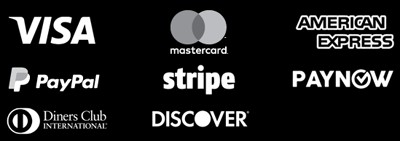Get in Touch with Us
We're Here to Assist You
Have questions, need support, or want to discuss a project? At Printing.com.sg, we’re dedicated to providing exceptional service and support.
Reach out to our friendly team through phone, email, or our online contact form.
We're here to help with all your printing needs and ensure your experience with us is seamless and satisfactory.

Contact Us
We’re Ready to Help!
Whether you have inquiries about our printing services, need assistance with an order, or want to provide feedback, we’re here to assist you. Please use the contact details below or fill out our online form to get in touch with our team.
Contact Information:
Business Hours:
Monday to Friday: 9:30 AM - 5.30 PM
Saturday, Sunday & Public Holiday Closed
Thank you for choosing Printing.com.sg. We look forward to assisting you!
Here are some FAQ topics addressing why recent corporate websites, like printing.com.sg, may not list their contact numbers:
Why Don’t We List a Contact Number?
- Why doesn’t Printing.com.sg list a contact phone number?
Explanation about efficient support routing, ensuring queries go directly to the relevant department through forms and support tickets.
- 2. How can I get help if I need immediate assistance?
Overview of alternative support options like live chat like Whatsapp, support ticketing, and email, which are monitored for fast response times.
- 3. Is there a way to speak with a representative directly?
Explanation that phone support may be provided in specific cases or upon request after an initial online inquiry.
- 4. Why do companies prefer online support channels?
Insight into how online support optimizes customer service by allowing representatives to handle multiple inquiries efficiently.
- 5. How does online support benefit customers?
Benefits for customers, such as reduced wait times, quick access to answers via FAQs, and a detailed record of communications.
- 6. Is my inquiry tracked through online support?
Information about how support tickets and emails create a history for tracking and follow-up, which improves issue resolution and consistency.
- 7. Are there security reasons for not listing a phone number?
Brief discussion of how reducing direct phone access helps prevent spam calls and keeps support lines focused on genuine customer needs.
Why Print with Us?
Your Trusted Partner for All Printing Needs
At Printing.com.sg, we pride ourselves on delivering top-quality printing services with exceptional customer care.
Whether you're a business owner, marketer, or individual, we understand the importance of reliable, professional printing.
Here’s why we’re the preferred choice for printing in Singapore:
We use state-of-the-art technology and premium materials to ensure every print is sharp, vibrant, and durable.
We know deadlines matter. Our efficient production process ensures that your projects are printed and delivered on time, every time.
Enjoy affordable rates without compromising on quality. We offer great value for all your printing needs.
From standard prints to bespoke designs, we offer a wide range of customizable options to suit your specific requirements.
Our friendly and knowledgeable team is always ready to assist you, from placing your order to after-sales support. We’re here to make your printing experience seamless.
Frequently Asked Questions
6. General FAQs about Printing Services
- 1. What Types of Printing Services Are Available?
Printing services are categorized based on the method used and the type of materials being printed. Common types include:
- Digital Printing: Ideal for short print runs and quick turnarounds. Best for business cards, flyers, and personalized items like direct mail.
- Offset Printing: Great for high-volume jobs. Offers consistent, high-quality results and is more cost-effective for larger quantities.
- Large Format Printing: Used for banners, posters, and other oversized materials. Typically done on vinyl, fabric, or heavy-duty paper.
- Screen Printing: Often used for apparel and promotional items like T-shirts and tote bags.
- Custom Finishing: Services that add extra touches to your printed materials, such as lamination, embossing, spot UV, or foil stamping.
- 2. What Are the Most Commonly Printed Materials?
Businesses typically print a wide range of materials depending on their needs. Some of the most common include:
- Business Cards: A must-have for networking and brand promotion.
- Flyers and Brochures: Used to promote services, products, or events.
- Posters and Banners: Large-format printing for events, retail displays, or outdoor advertising.
- Packaging and Labels: Custom boxes, labels, and tags for products.
- Catalogs and Booklets: Detailed product listings or company information for clients or customers.
- Invitations and Stationery: Ideal for events, weddings, or corporate correspondence.
- 3. What Is the Difference Between Digital and Offset Printing?
- Digital Printing: Uses modern technology to print directly from a digital file. It’s perfect for short runs (e.g., under 500 units) and projects that require variable data, like personalized mailers.
- Best For: Small quantities, quick turnaround times, personalized items.
- Pros: No setup fees, ideal for short runs, fast.
- Cons: Higher cost per unit for large volumes compared to offset.
- Offset Printing: Involves creating printing plates for each color, which are then used to transfer ink to the material. It’s best for large print runs where consistency and cost-efficiency are key.
- Best For: High-volume projects like magazines, catalogs, or large batches of business cards.
- Pros: Lower cost per unit for large quantities, superior color consistency.
- Cons: Longer setup time, more expensive for short runs.
- 4. How Can I Ensure the Best Print Quality?
To achieve the best print quality, follow these steps:
- Resolution: Use high-resolution images (at least 300 DPI) to avoid pixelation or blurriness.
- Color Mode: Ensure your design files are in CMYK (Cyan, Magenta, Yellow, Black) color mode for printing. RGB is used for digital displays and can cause inaccurate colors when printed.
- Bleed Area: Add a bleed area (usually 3-5mm) to your design. This ensures no white edges appear after trimming.
- Proofing: Always request a proof (either digital or hard copy) before printing to catch errors or color inconsistencies.
- Paper Quality: Choose a paper type that suits your project, such as glossy, matte, or textured paper.
- 5. How Do I Submit Files for Printing?
Most printing services accept a variety of file formats. The most common formats include:
- PDF: Ideal for maintaining quality and formatting across different devices. Ensure the file is set up with the correct dimensions and in CMYK color mode.
- TIFF: Good for high-quality image printing.
- EPS: Used for vector graphics (logos, illustrations).
- JPG/PNG: Acceptable for images, but ensure the resolution is high enough (300 DPI) for printing.
When submitting files, be sure to:
- Embed all fonts or convert them to outlines.
- Ensure images are high-resolution and properly placed.
- Include a bleed area if your design extends to the edge of the paper.
- 6. What Is a Print Proof, and Why Do I Need One?
A print proof is a sample of your printed material that allows you to review the design before the full print run begins. It ensures that colors, text, and images appear as expected.
- Digital Proof: A PDF or digital version of your design that you review on-screen.
- Best For: Simple projects where color matching isn’t crucial.
- Hard Proof: A physical sample of your printed material.
- Best For: Projects where color accuracy, paper quality, and finishing are critical (e.g., packaging or high-end brochures).
Proofing helps catch mistakes or adjustments before committing to the entire print run, saving you time and money.
- 7. How Long Do Printing Projects Typically Take?
The turnaround time for printing services depends on the complexity and size of the project. Common turnaround times include:
- Same Day or Next Day: Available for simple digital printing jobs, like business cards or flyers.
- 2-3 Days: Common for larger digital print runs, brochures, or postcards.
- 5-7 Days: For offset printing or projects requiring special finishes (e.g., lamination, foil stamping).
- 7-10 Days: Large format printing, custom packaging, or bulk orders may take longer depending on the size and complexity of the project.
Rush services are often available at an additional cost if you need materials quickly.
- 8. What Are the Best Paper Options for Printing?
Choosing the right paper is essential to achieving the desired look and feel for your printed materials. Here are some common paper types:
- Gloss Paper: Shiny and smooth, ideal for vibrant images and photos. Great for brochures, posters, and magazines.
- Matte Paper: Non-glossy, with a smooth finish. It’s great for professional documents, business cards, or reports.
- Textured Paper: Adds tactile quality, perfect for invitations, stationery, and premium marketing materials.
- Recycled Paper: Eco-friendly option, suitable for businesses looking to reduce their environmental footprint. It comes in various weights and finishes.
The weight of the paper, measured in GSM (grams per square meter), also affects its feel and durability. Heavier weights (e.g., 300gsm) are often used for business cards or packaging, while lighter weights (e.g., 100gsm) are common for flyers and brochures.
- 9. What Is Variable Data Printing?
Variable Data Printing (VDP) is a digital printing technology that allows you to customize each printed piece with unique information. It’s commonly used for:
- Personalized Direct Mail: Each letter or postcard can include the recipient’s name and tailored content.
- Event Invitations: Customize invitations with individual guest names and details.
- Promotional Materials: Use unique discount codes or offers on each item.
VDP is ideal for marketing campaigns where personalization can increase engagement and conversion rates.
- 10. How Much Does Printing Typically Cost?
The cost of printing varies based on several factors:
- Quantity: Bulk orders often benefit from lower costs per unit.
- Printing Method: Digital printing tends to be more affordable for small print runs, while offset printing is more cost-effective for larger orders.
- Paper Quality: Premium paper and special finishes (e.g., gloss, lamination) add to the cost.
- Custom Features: Special requests like die-cutting, foil stamping, or embossing will increase the price.
- Turnaround Time: Rush orders often come with additional fees.
Always ask for a detailed quote that includes setup costs, unit pricing, and shipping fees to understand the full cost of your project.
More FAQs To Help You Get Started
Find answers to the most common questions about printing services, including business card printing, eco-friendly options, and troubleshooting issues. This category is designed to provide quick, informative responses to help you navigate the printing process smoothly.
Explore Our Knowledge Base
Answers to Your Most Common Printing Questions, All in One Place Our Knowledge Base is here to provide clear and comprehensive answers to your most frequently asked questions. Learn more about our products, ordering process, and printing techniques with step-by-step guides, detailed tutorials, and troubleshooting tips. Empower yourself with the information you need to make informed decisions for your next print order.
Latest Insights from Our Blog
Stay informed with industry trends, printing tips, and design inspiration! Discover valuable insights, helpful guides, and creative ideas in our blog. From choosing the right printing materials to optimizing your designs for different products, our articles are crafted to help you get the most out of your print projects. Whether you're a small business owner or a creative professional, find inspiration to elevate your brand with every read.

